Macrame Knots – Lark’s Head Knot
One of the macrame knots is the so-called Lark’s Head Knot – also known as the Cow Hitch Knot. You usually start a macrame project with the horizontal Lark’s Head Knot. However, there is also a vertical version, which you can use to tie beautiful strands.
Table of Contents
Lark’s Head Knot – Horizontal
Lark’s Head Knot – Vertical
Lark’s Head Knot – Horizontal
This is usually the starting knot. You can use it to attach to rods or rings made of wood or similar. There are two different variants: The forward-facing and the reverse-facing variant. Which one you use depends on your personal preference. There is no right or wrong.
Forward-Facing
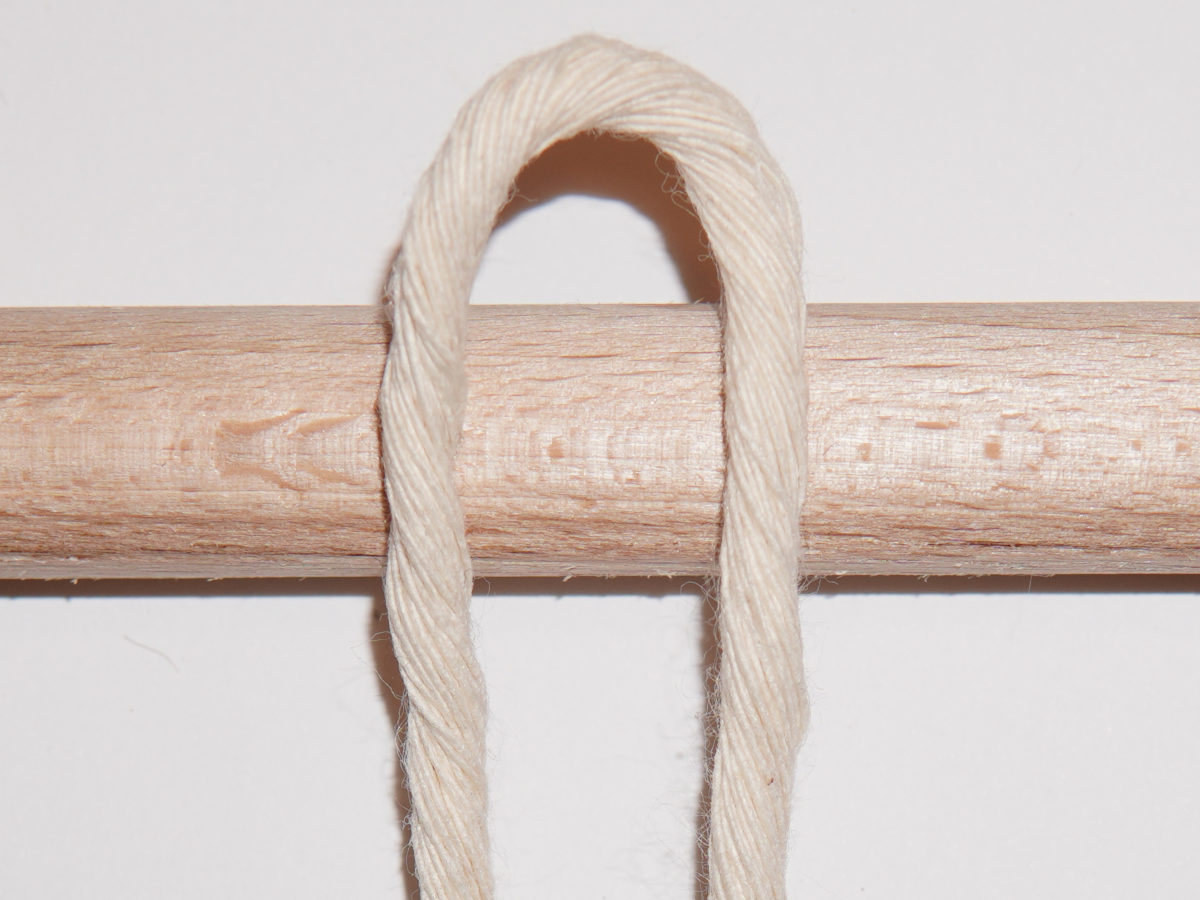
1
Take a strand and double it to create a loop. Place this over a stick or other support.
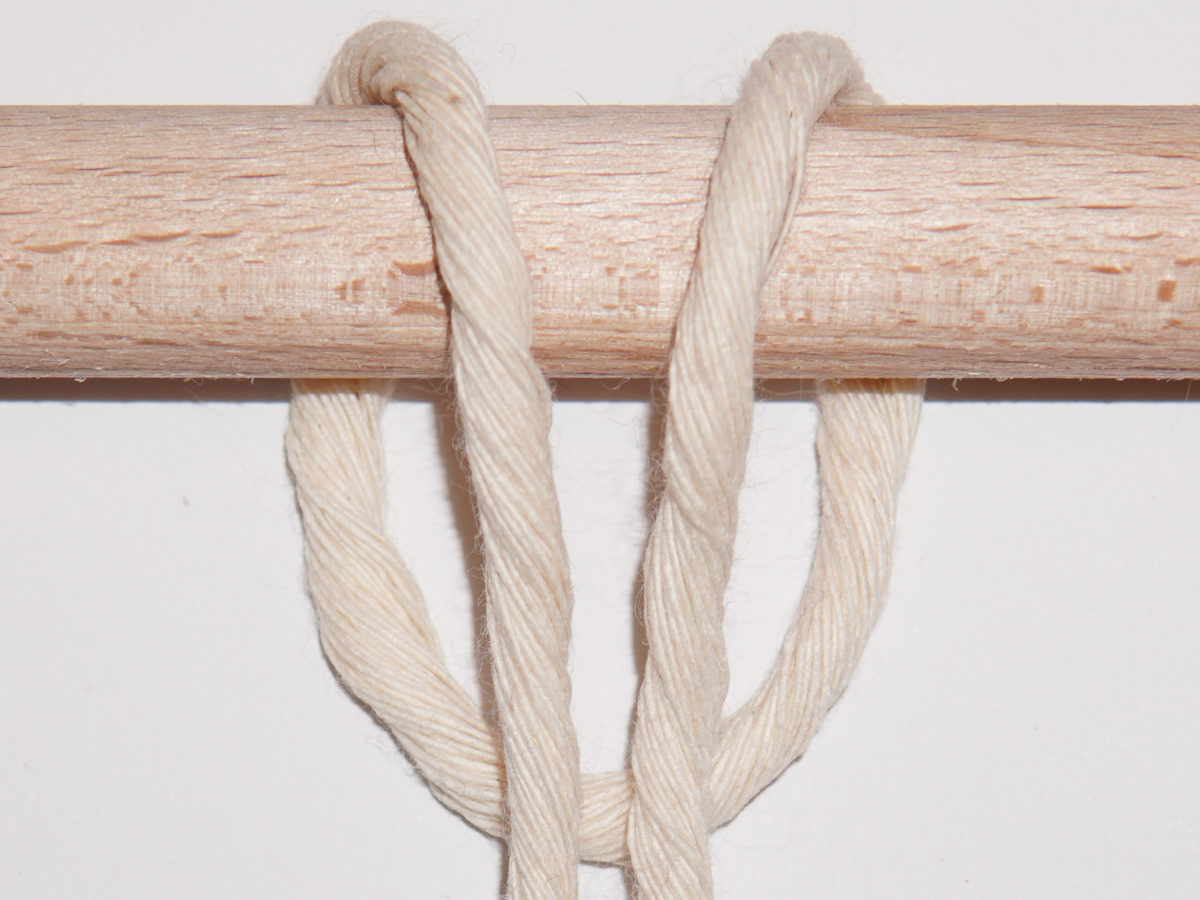
2
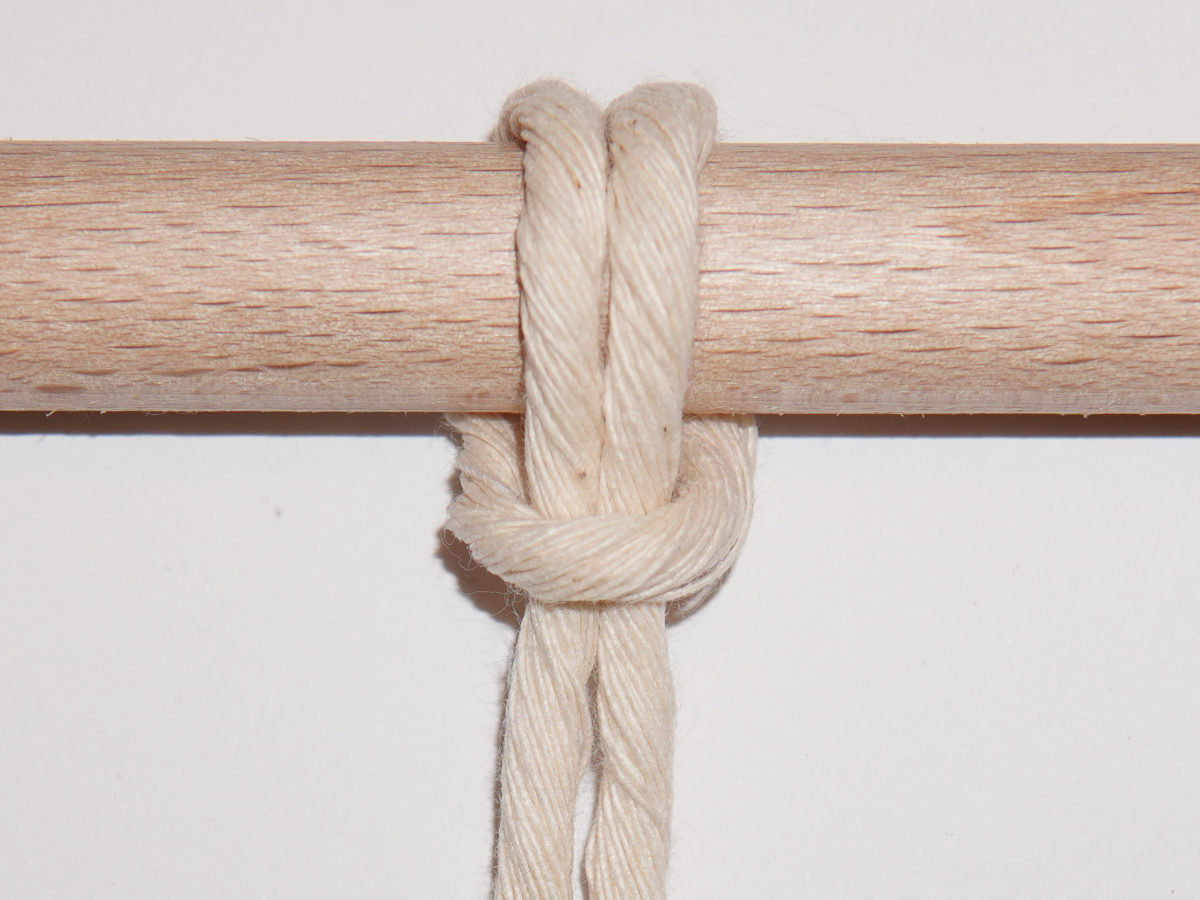
3
Reverse-Facing
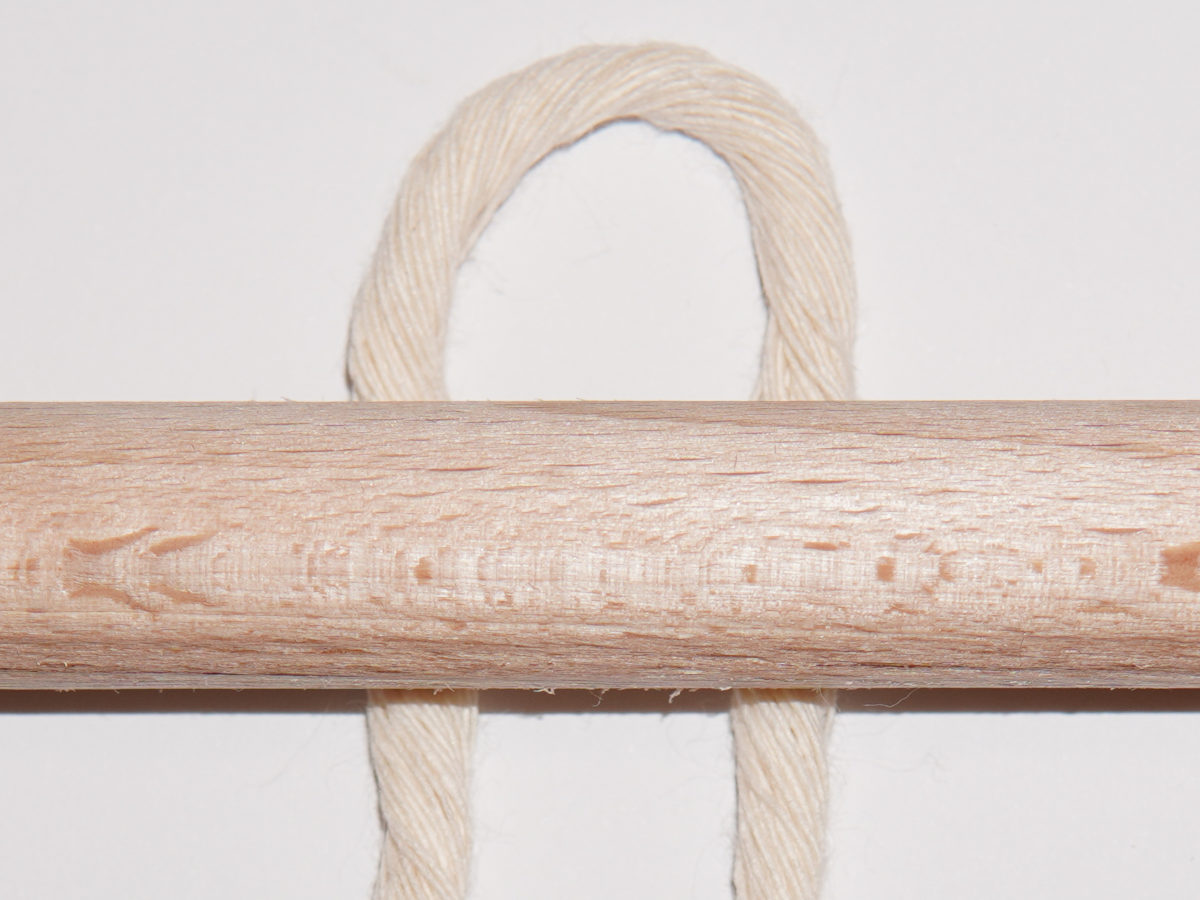
1
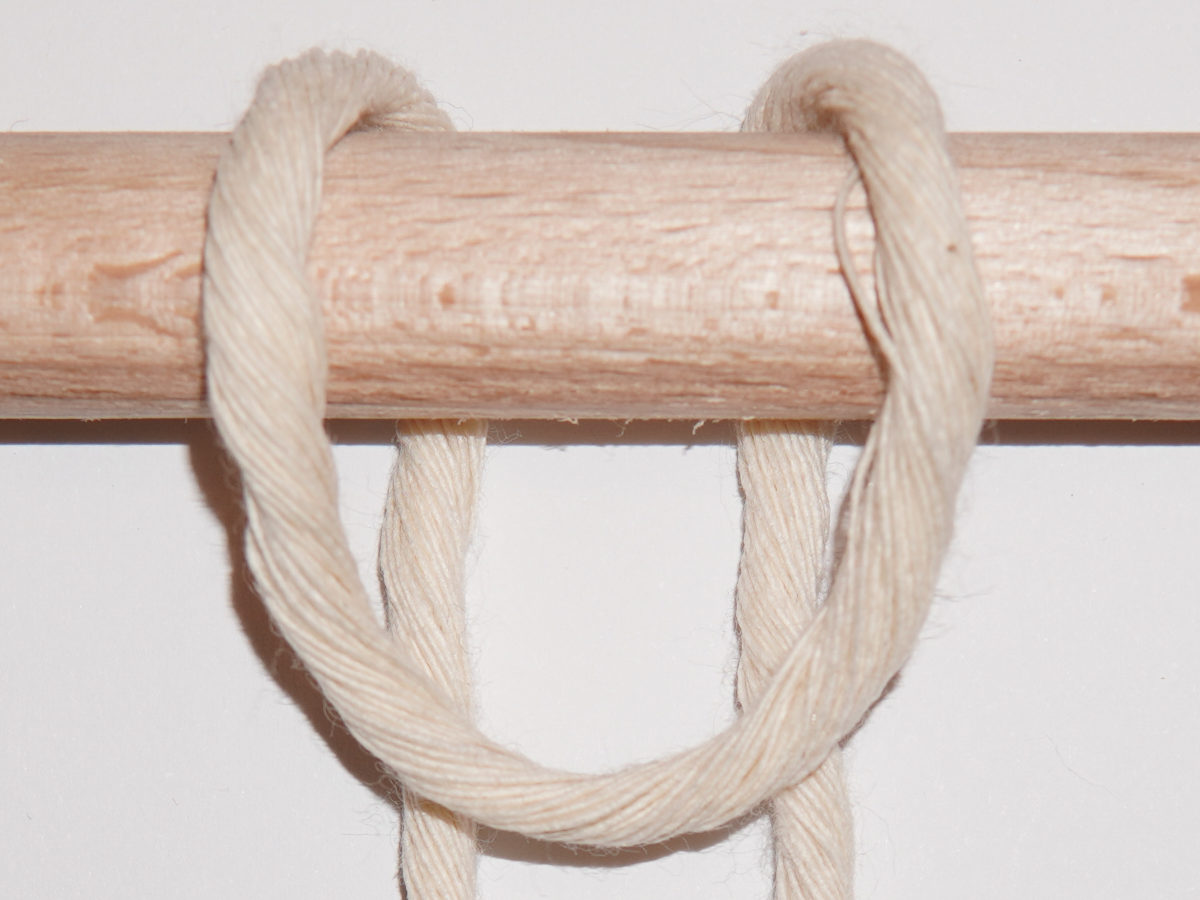
2
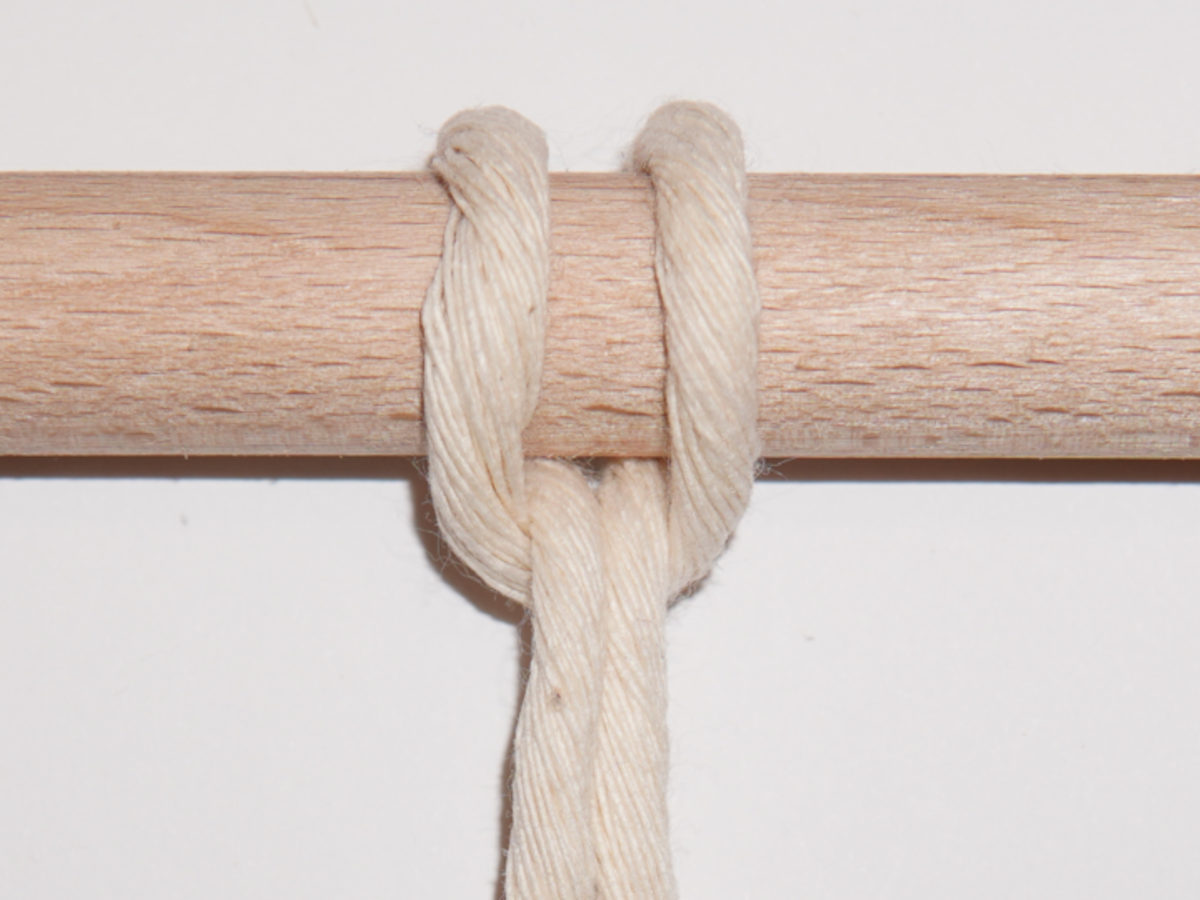
3
Lark’s Head Knot – Vertical
You can also knot the Lark’s Head Knot vertically to create a beautiful strand. You need two cords for this. In the pictures, the light-coloured strand is the working cord and the dark-coloured strand is the filler cord.
This is for clarity, you can of course use whatever colours you like.
Right-Facing
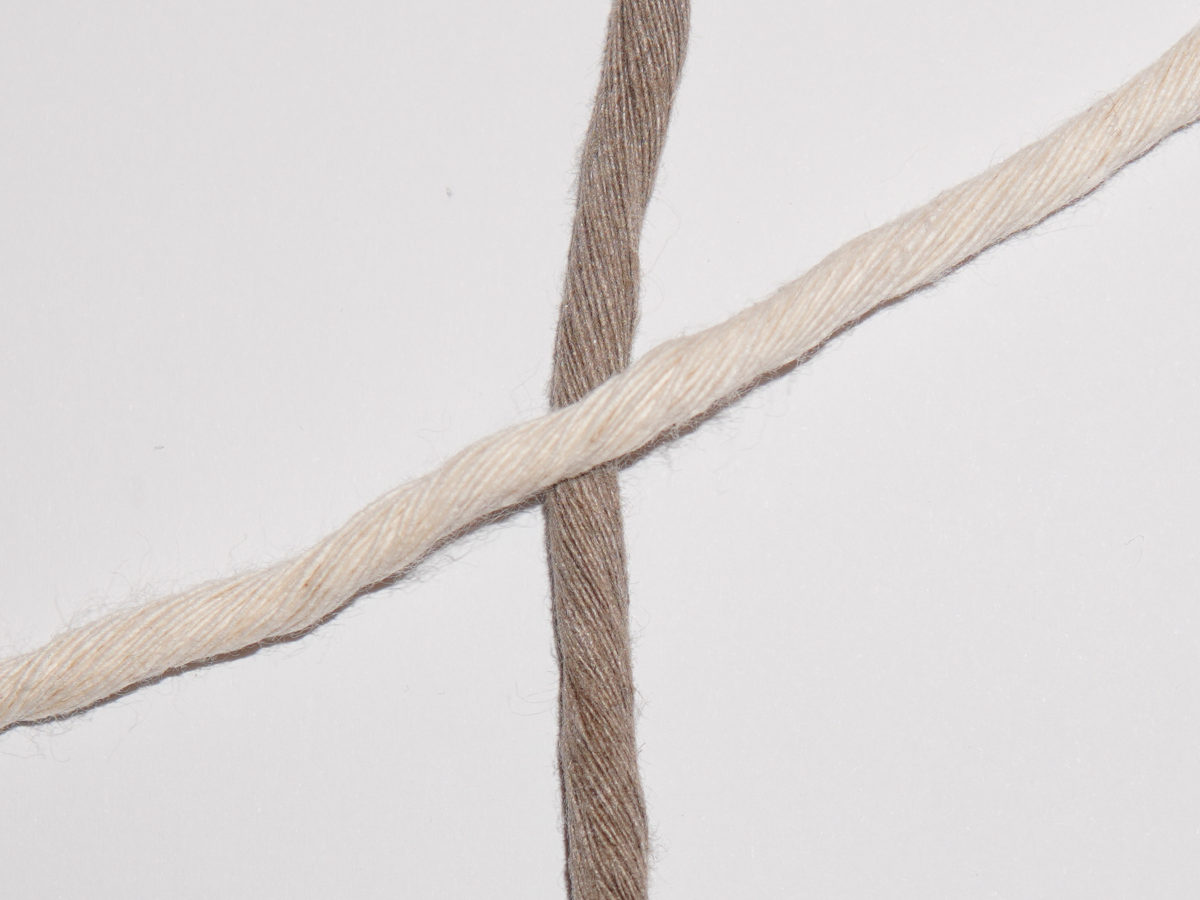
1
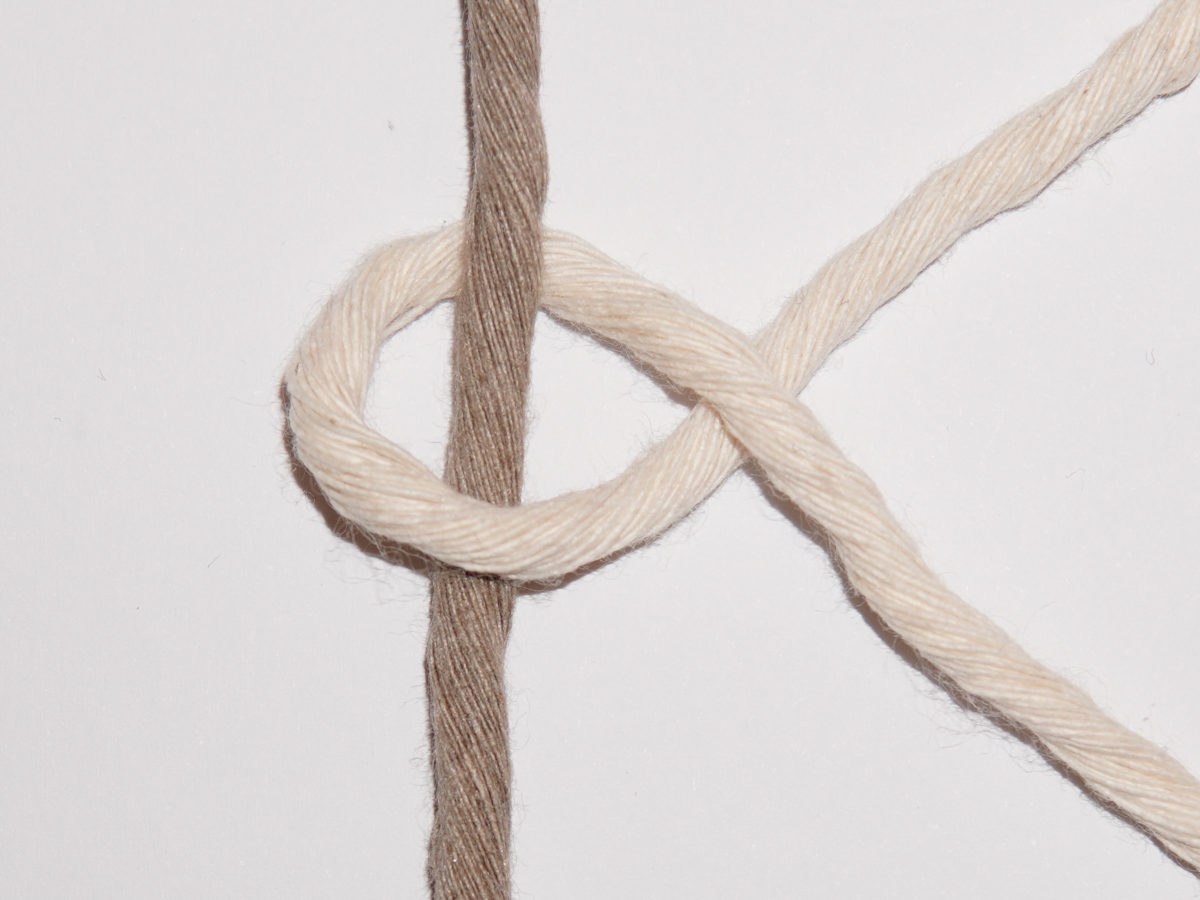
2
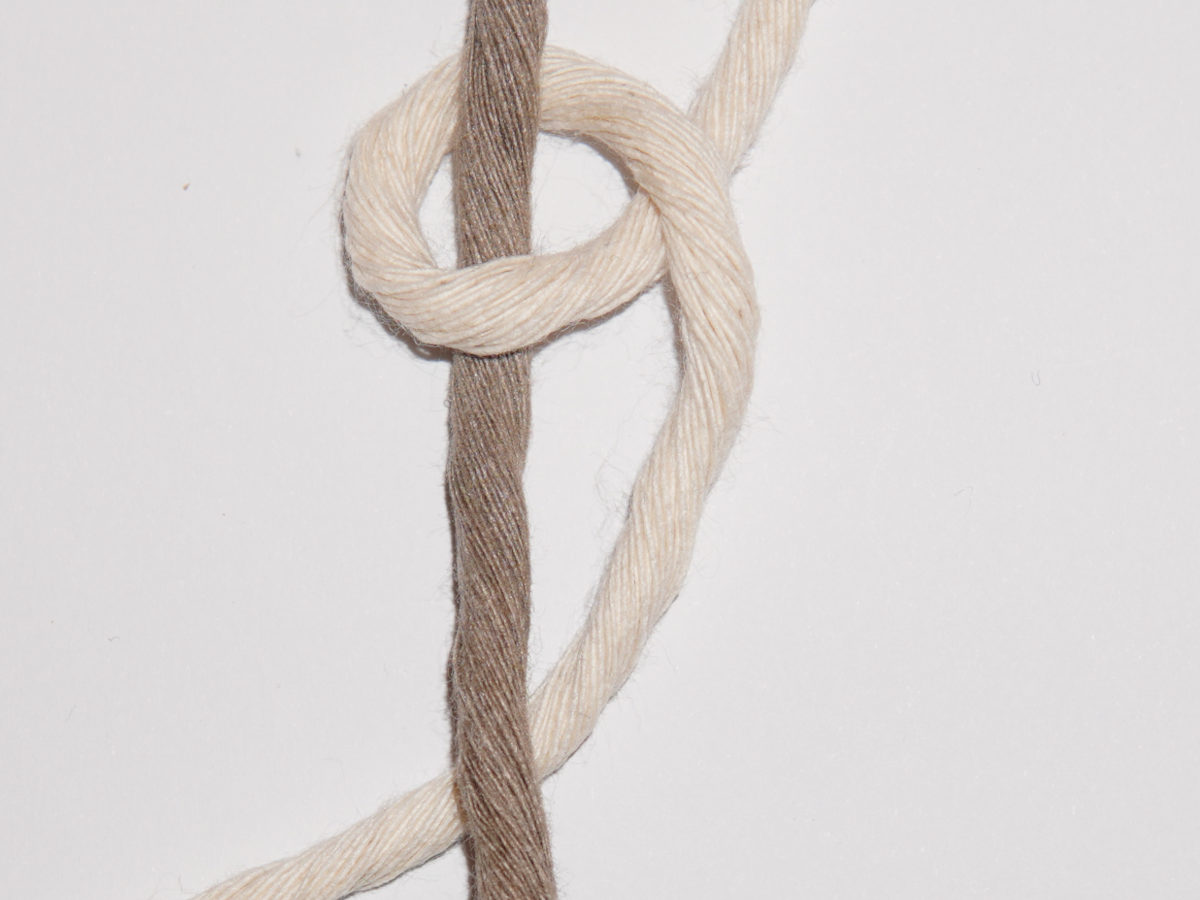
3

4
Then bring the working cord back up and place it over the filler cord.
Then pass it under itself to create another loop.
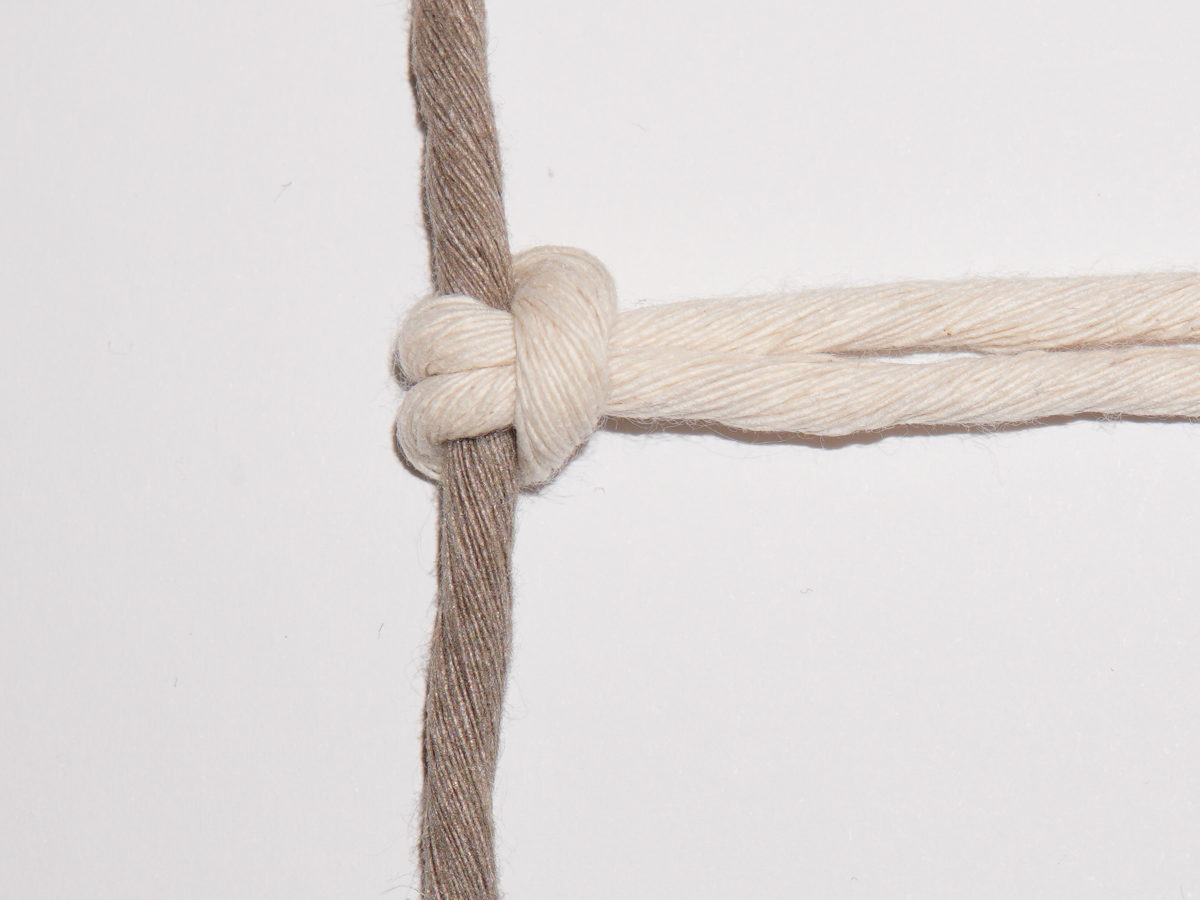
5
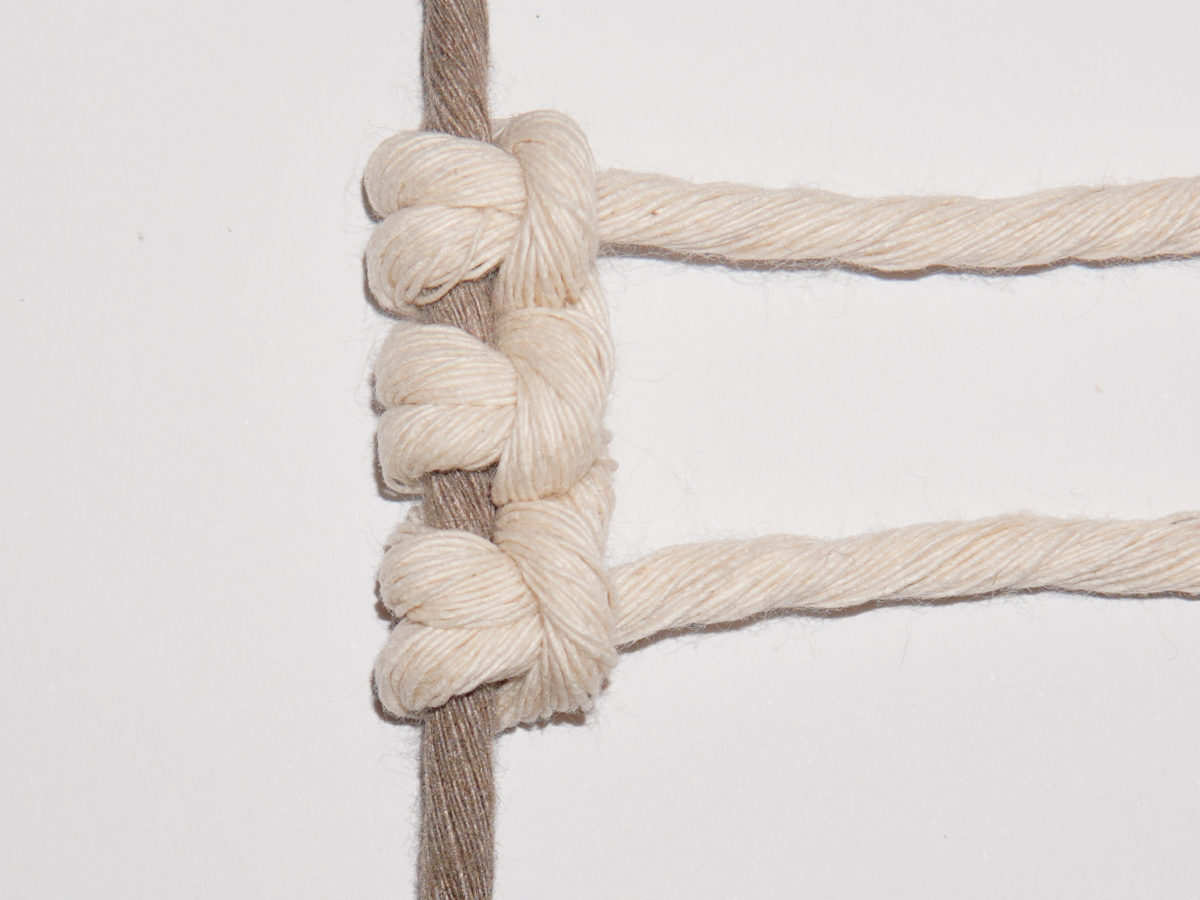
6
Left-Facing
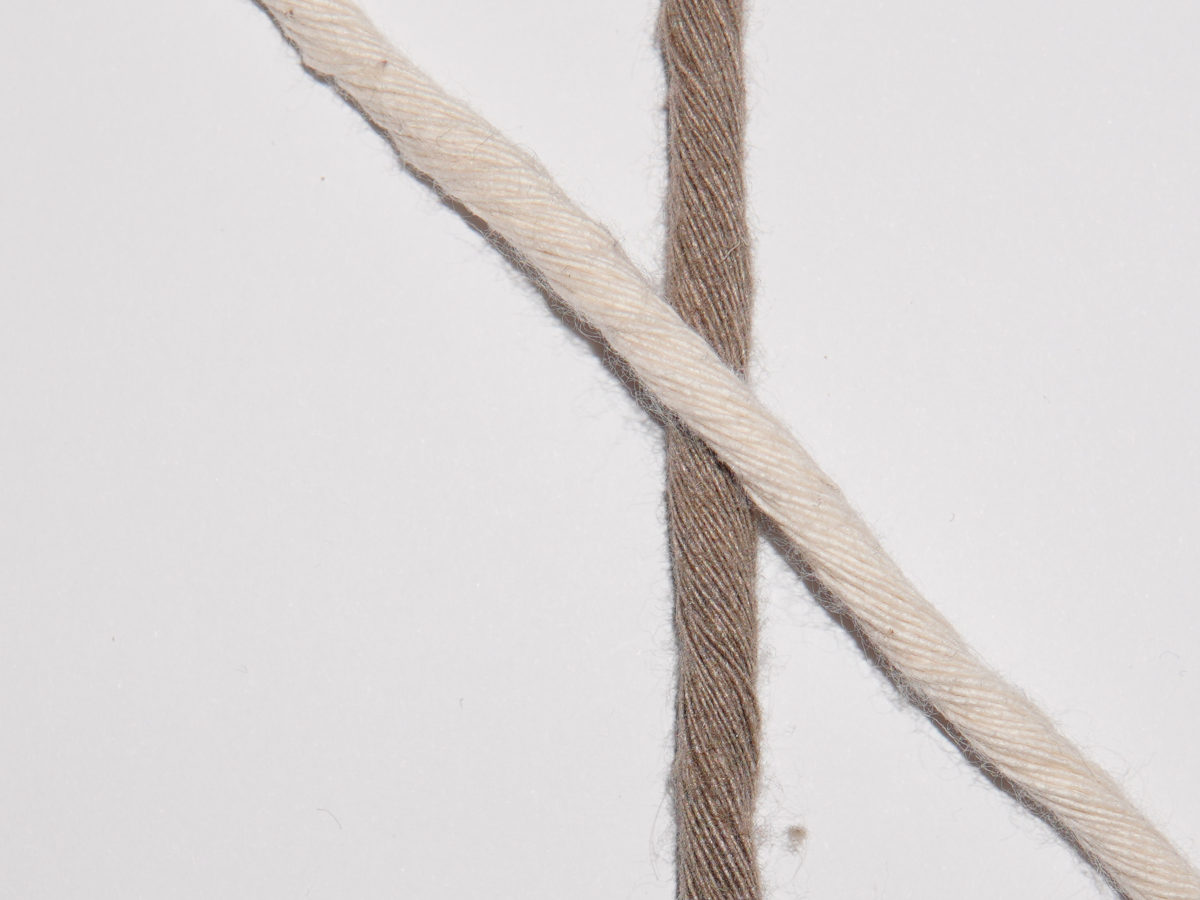
1
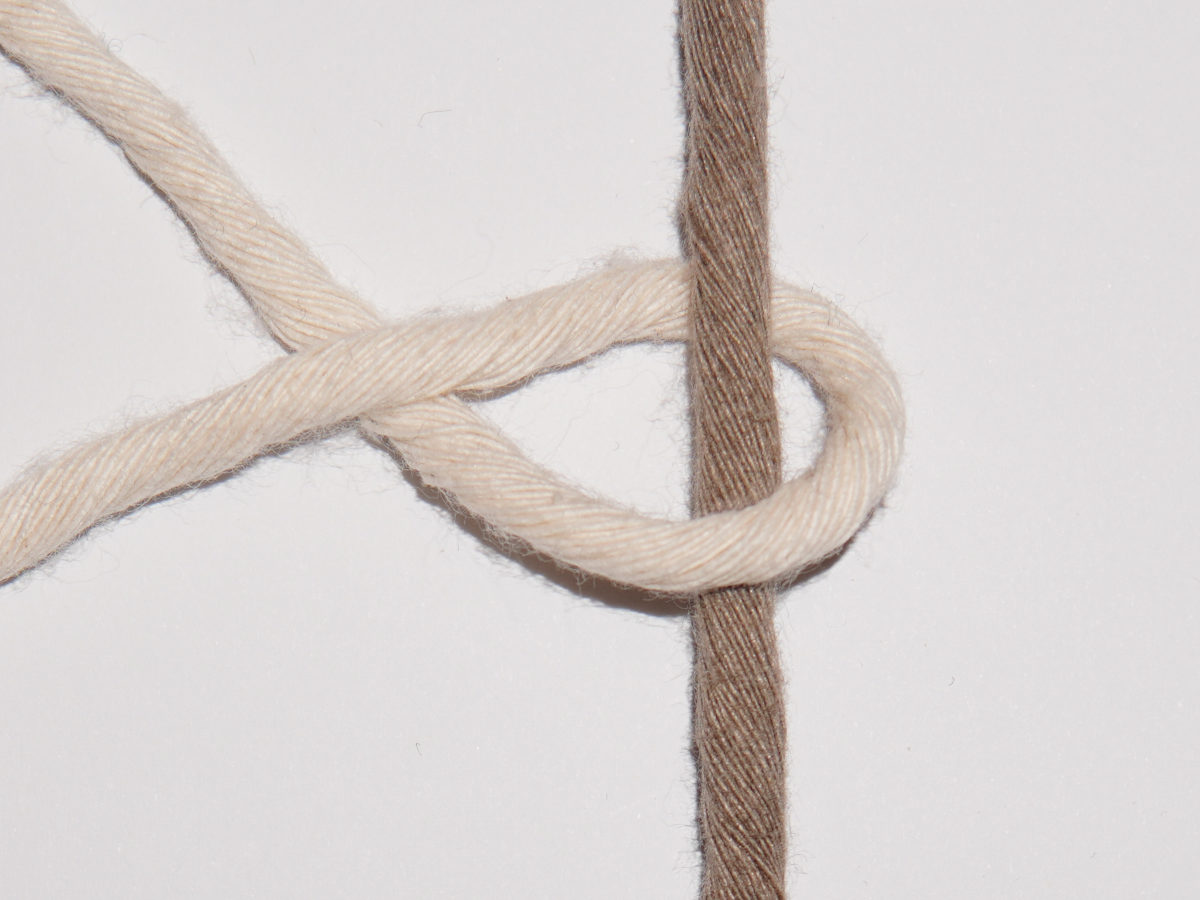
2

3
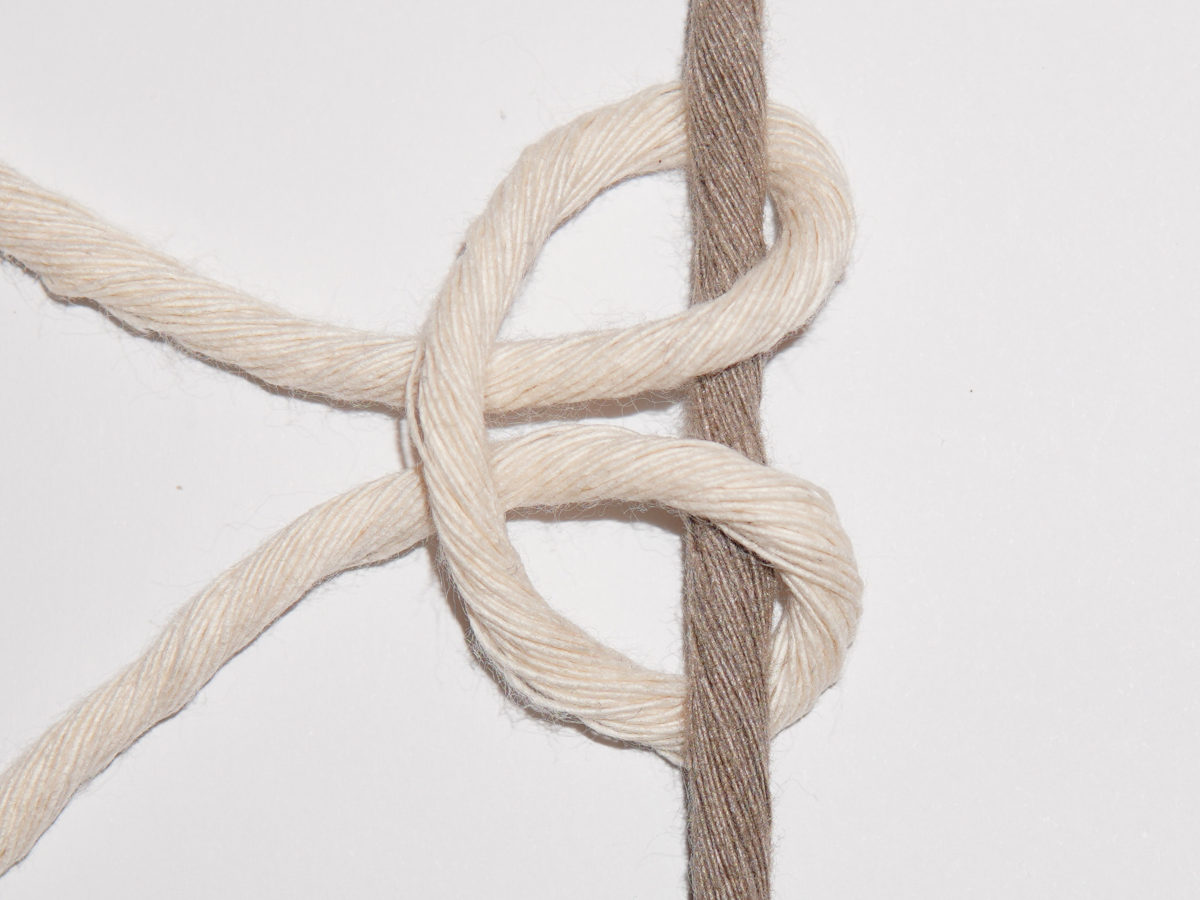
4
Then bring the working cord back up and place it over the filler cord.
Then pass it under itself to create another loop.
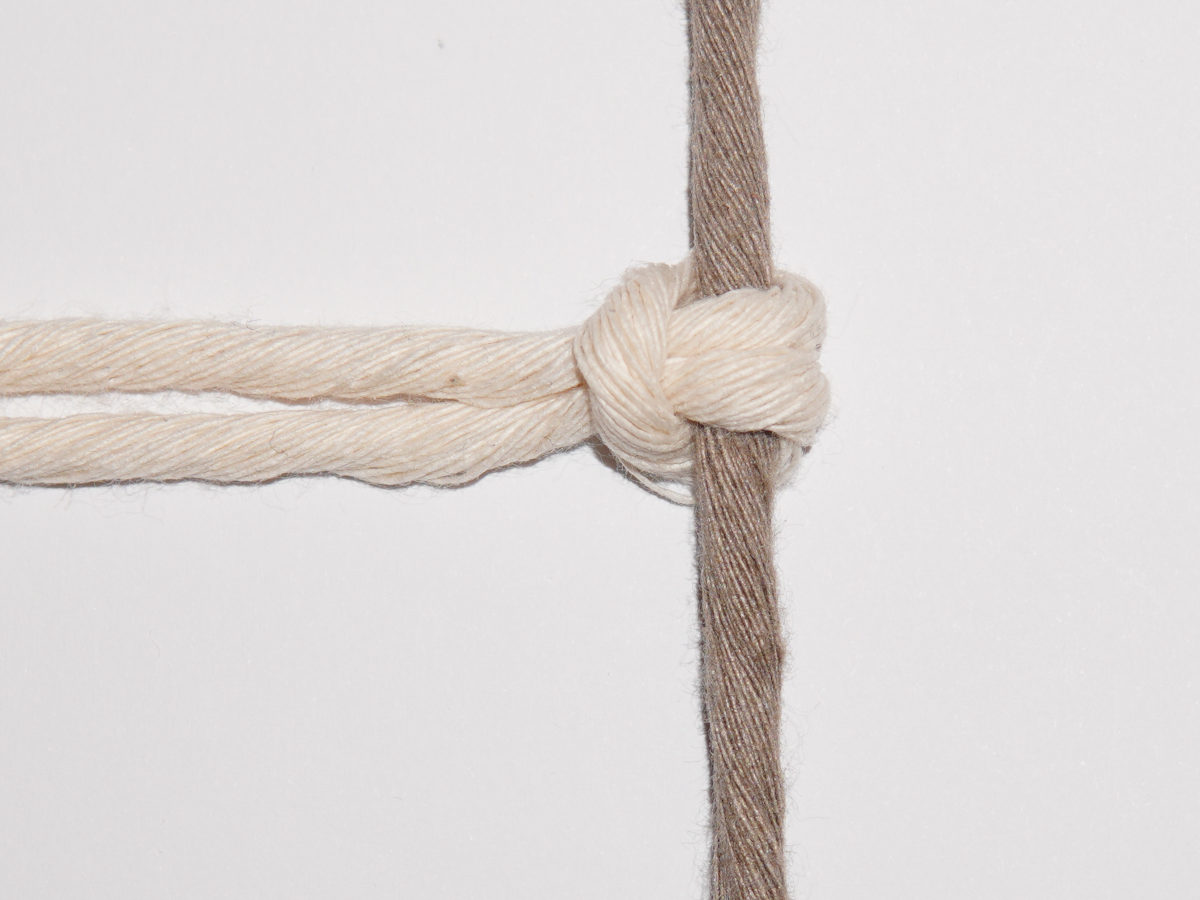
5
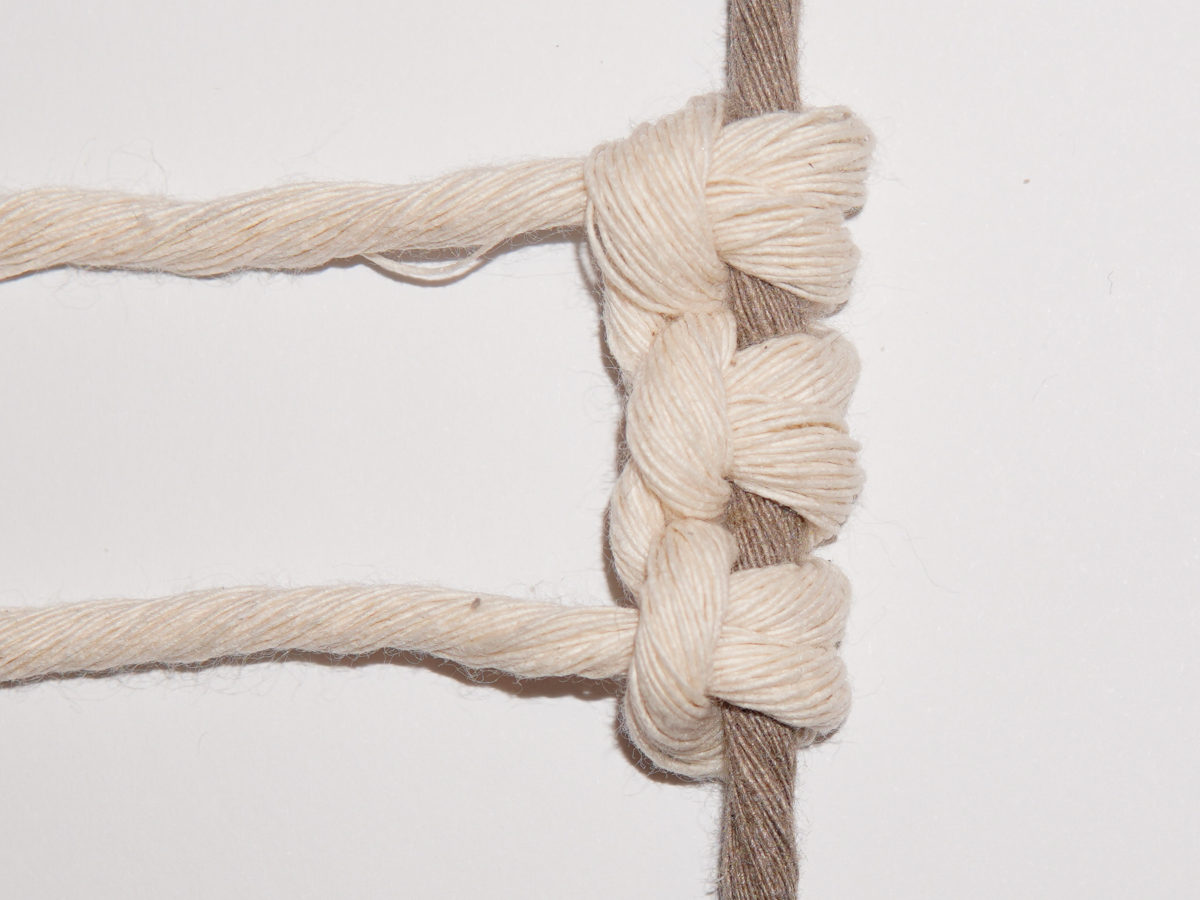
6
Alternating
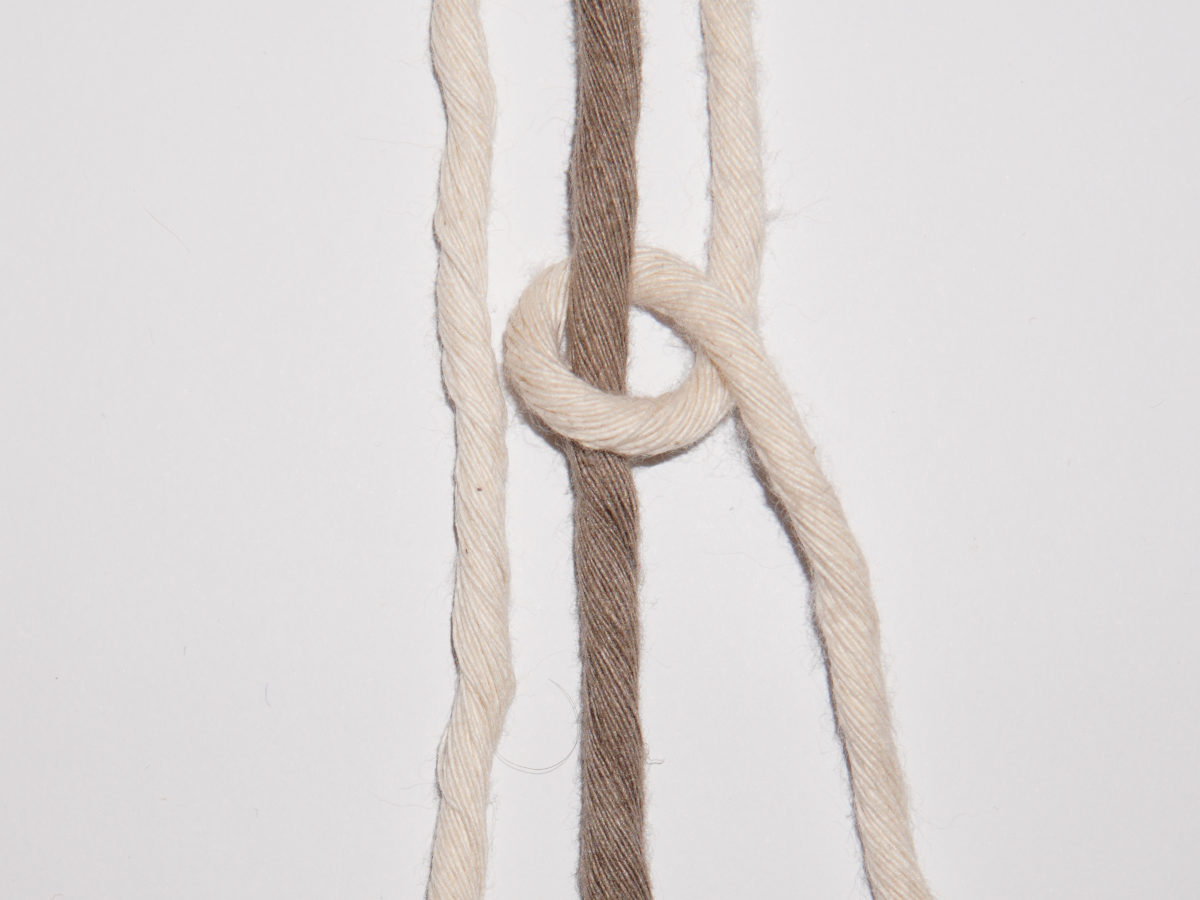
1
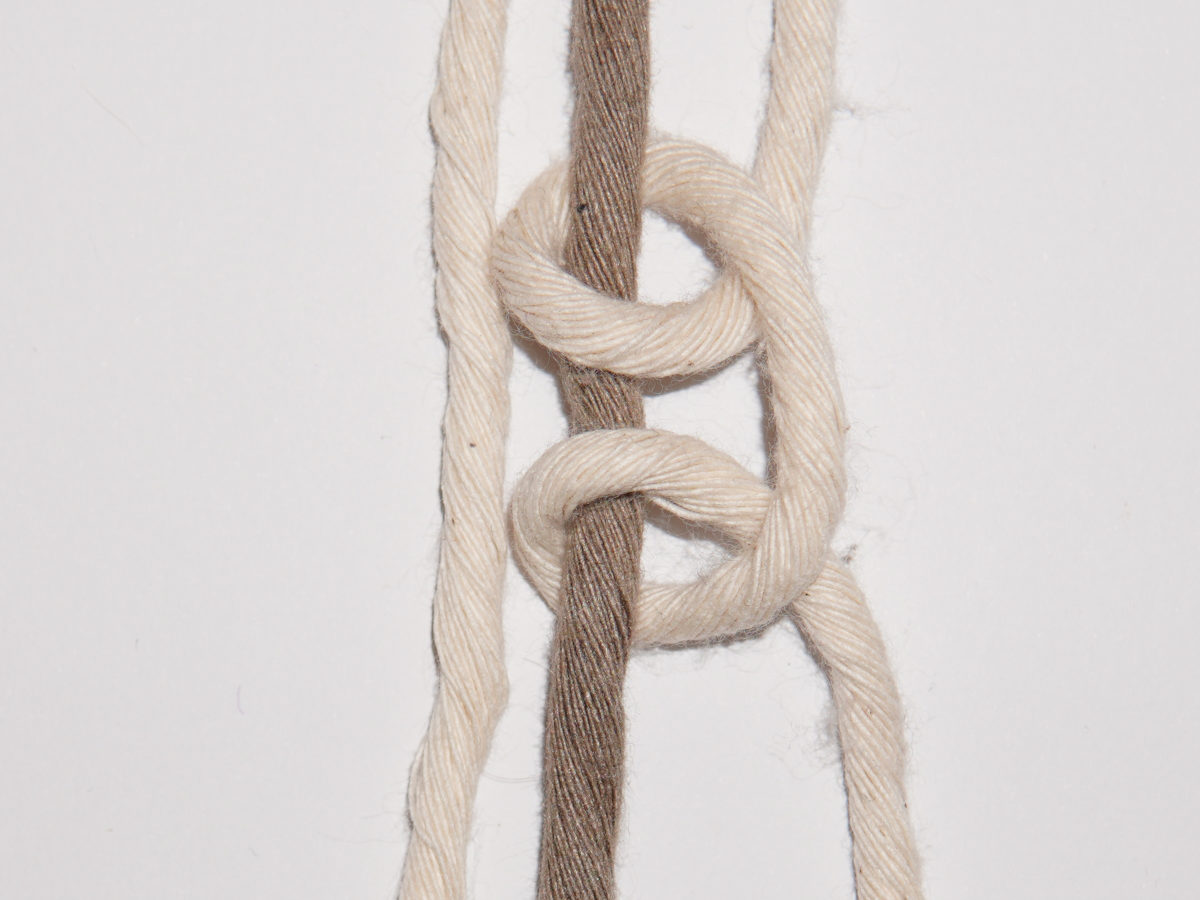
2
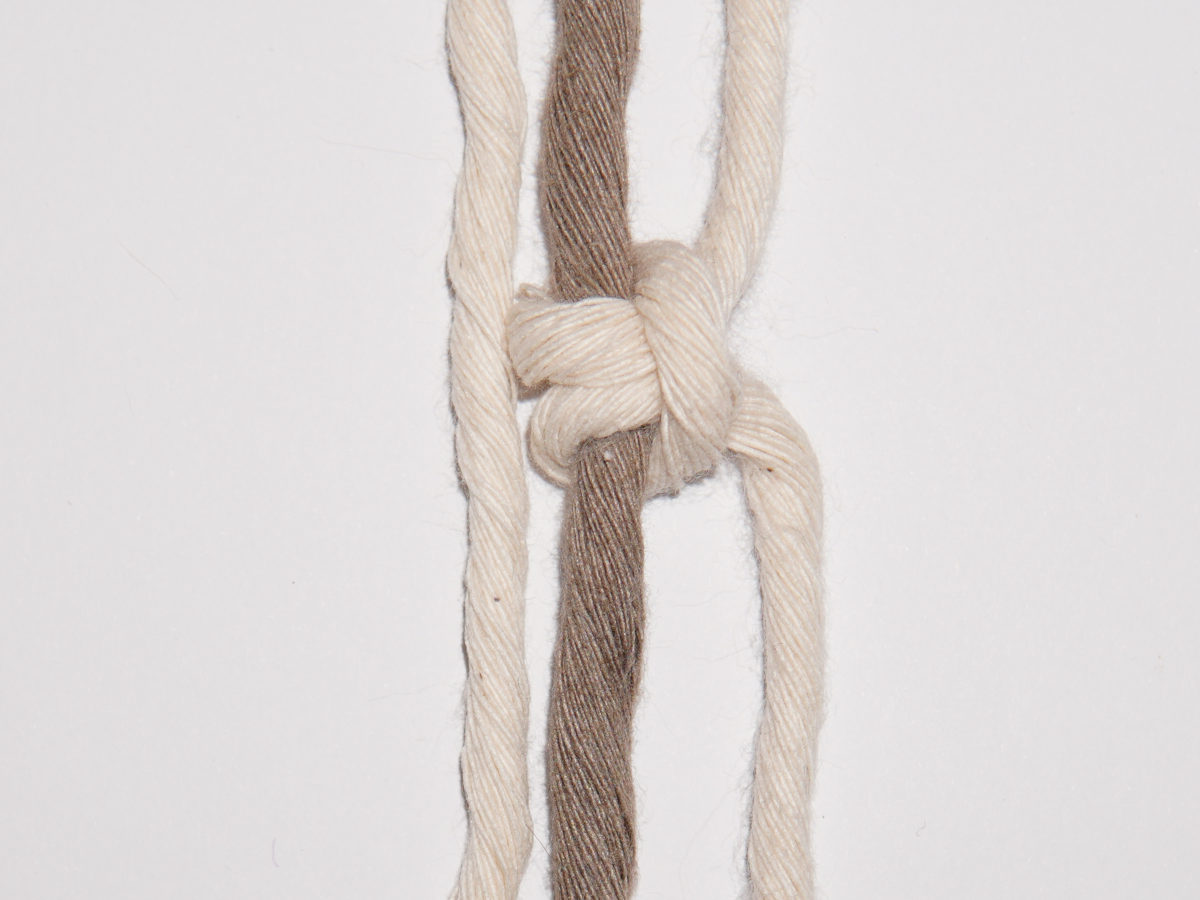
3
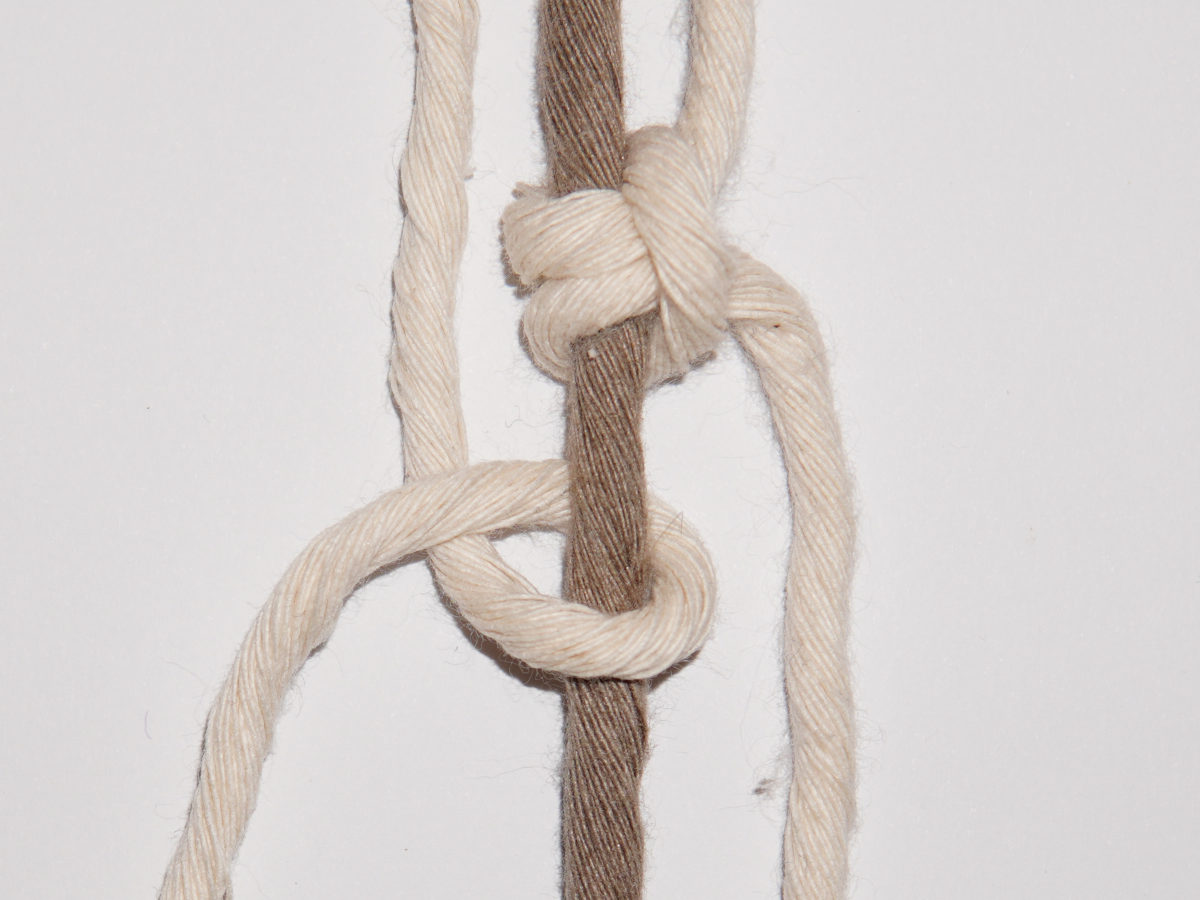
4
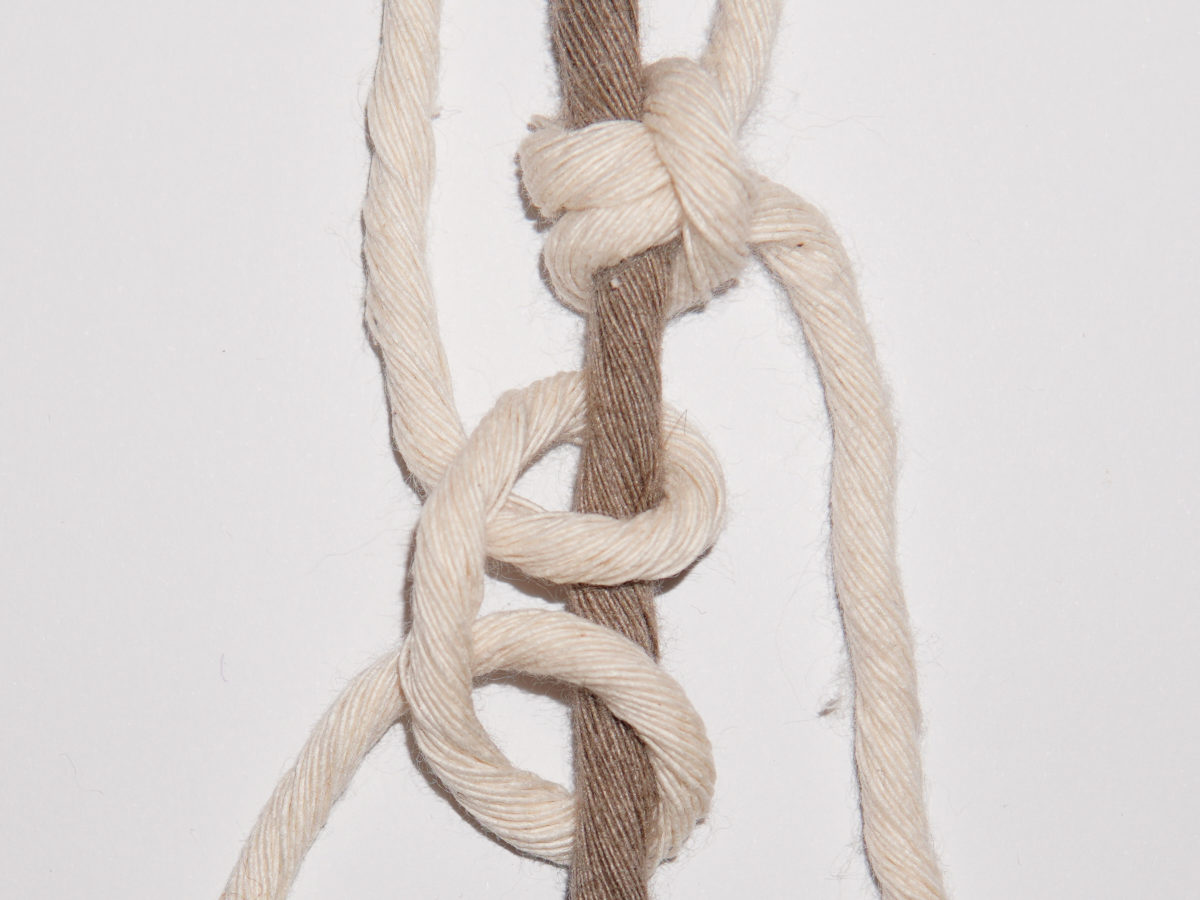
5
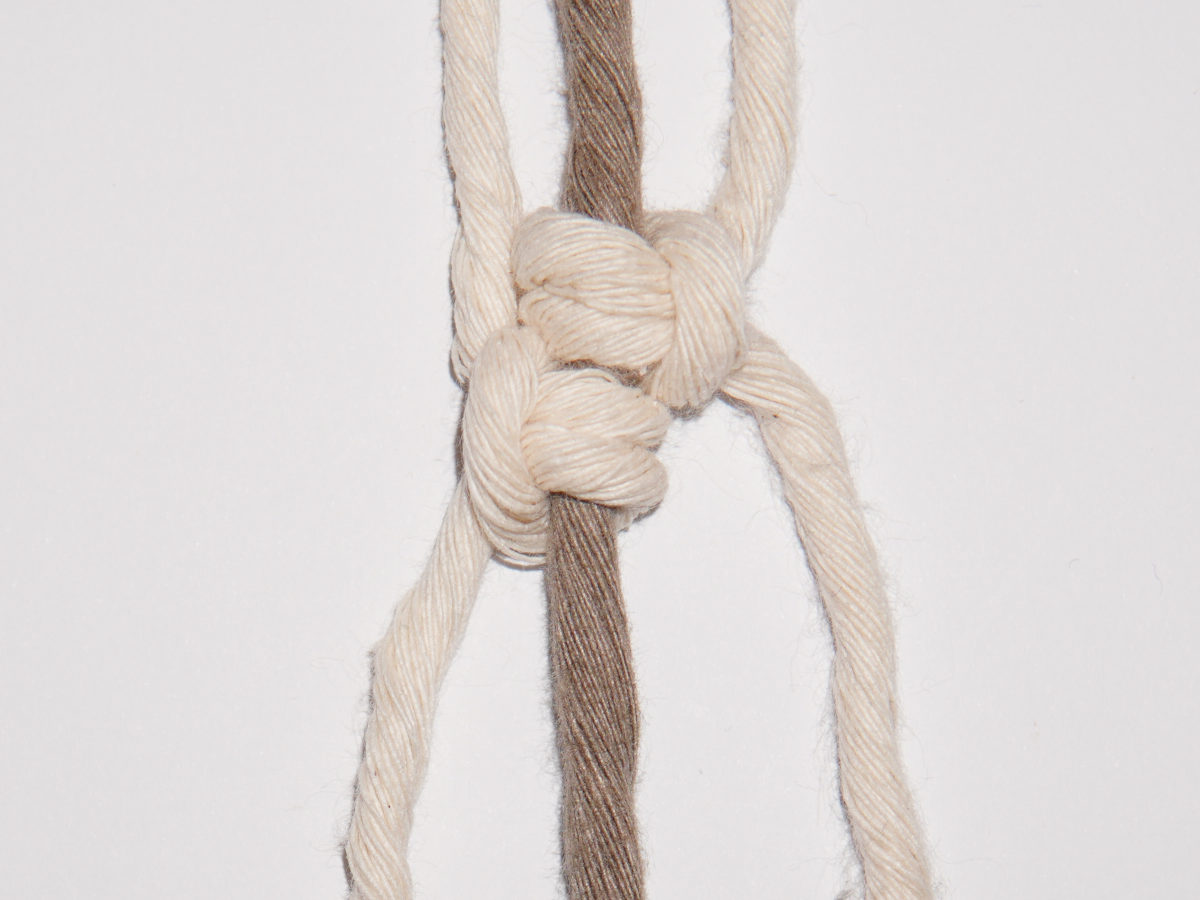
6
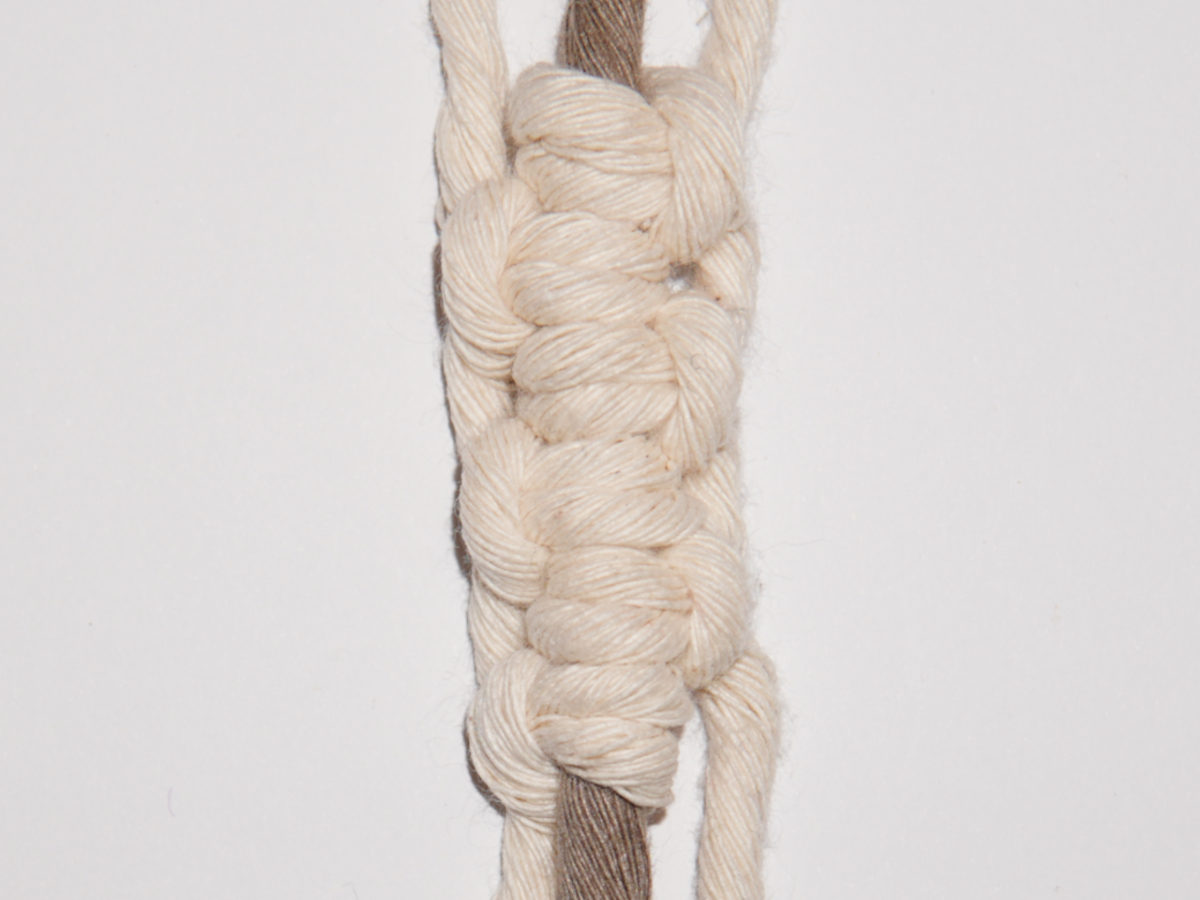
7
Alternating with Picots
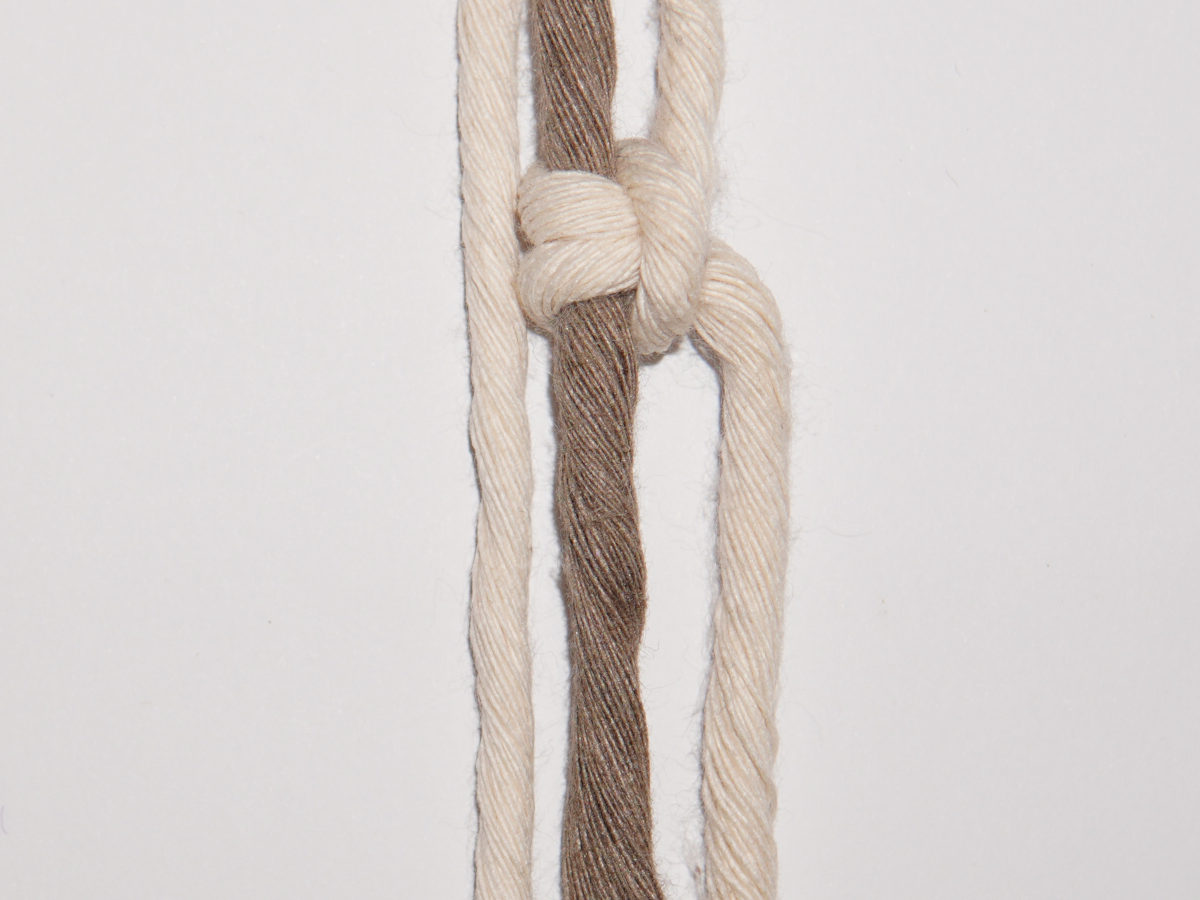
1
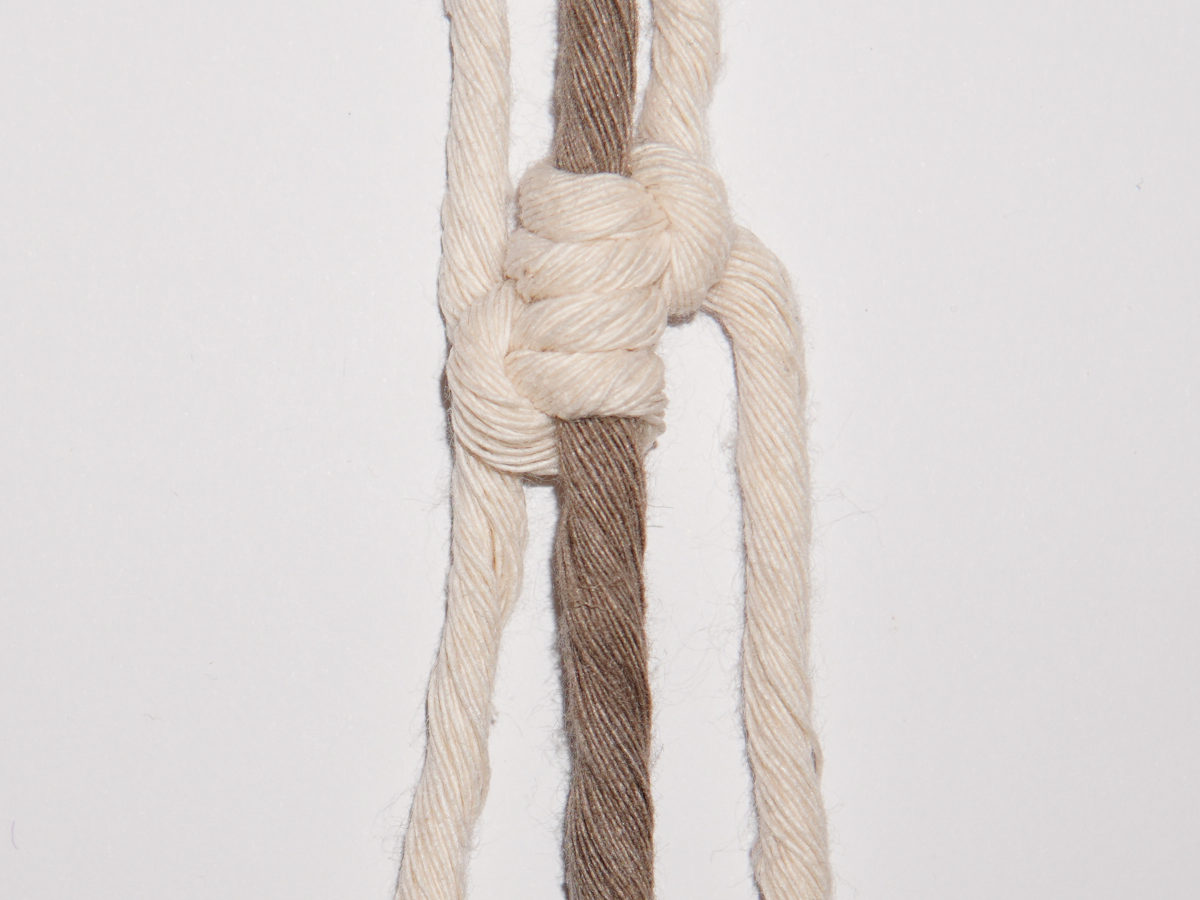
2
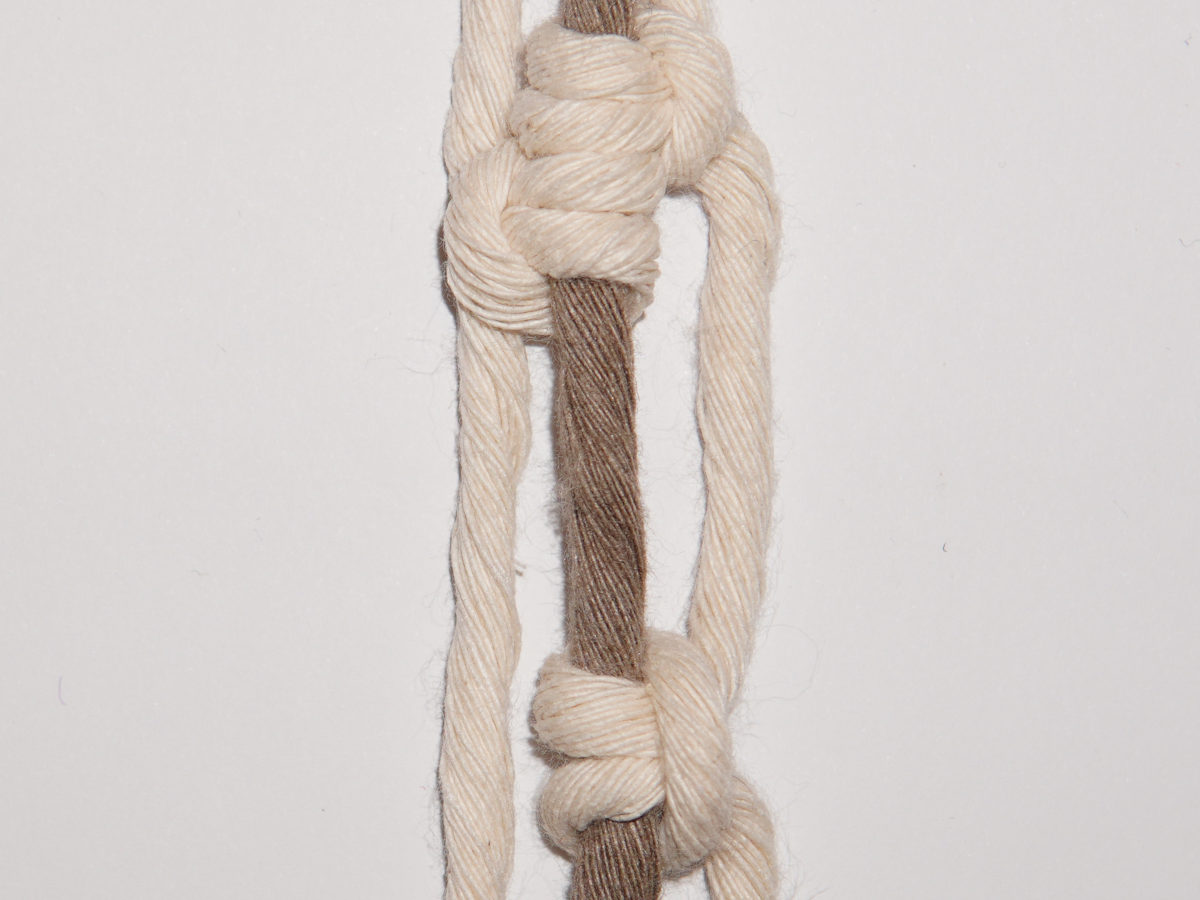
3
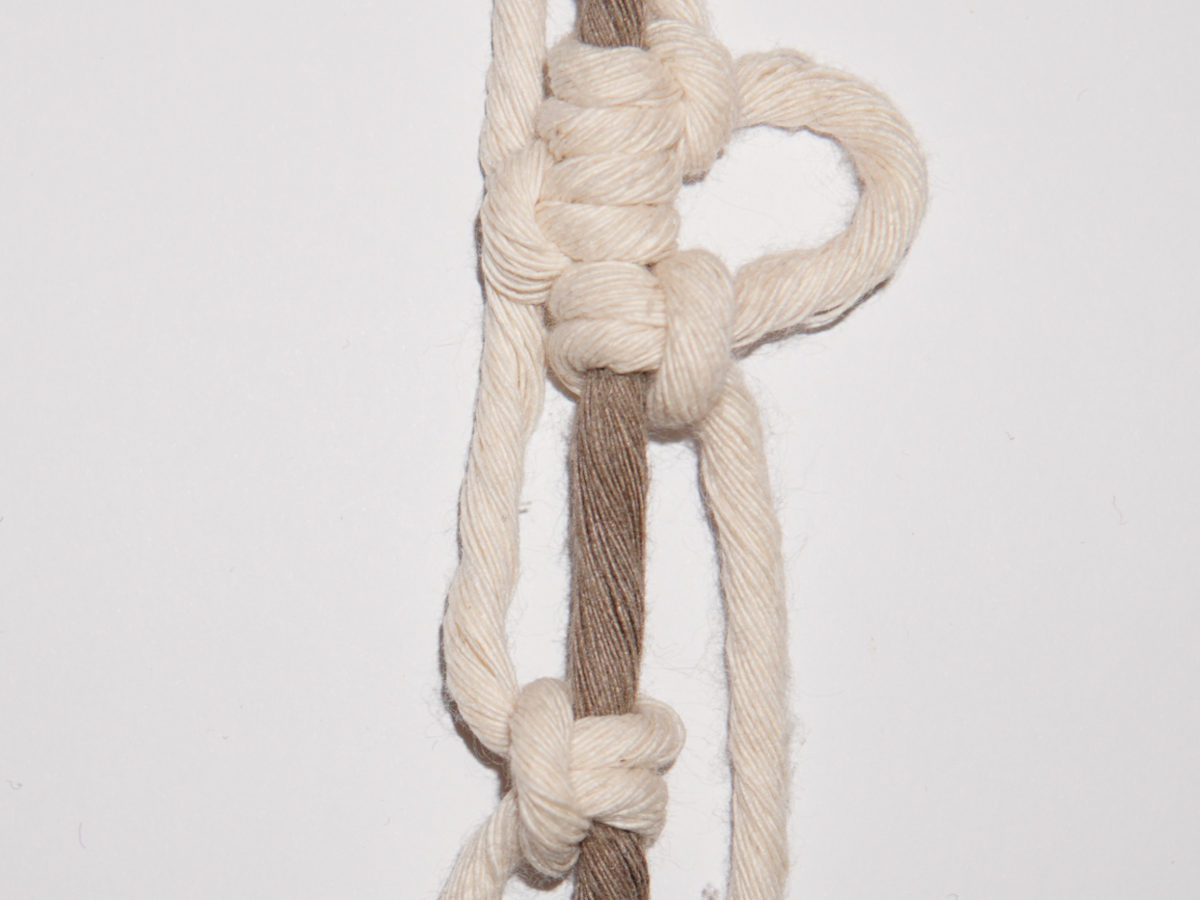
4
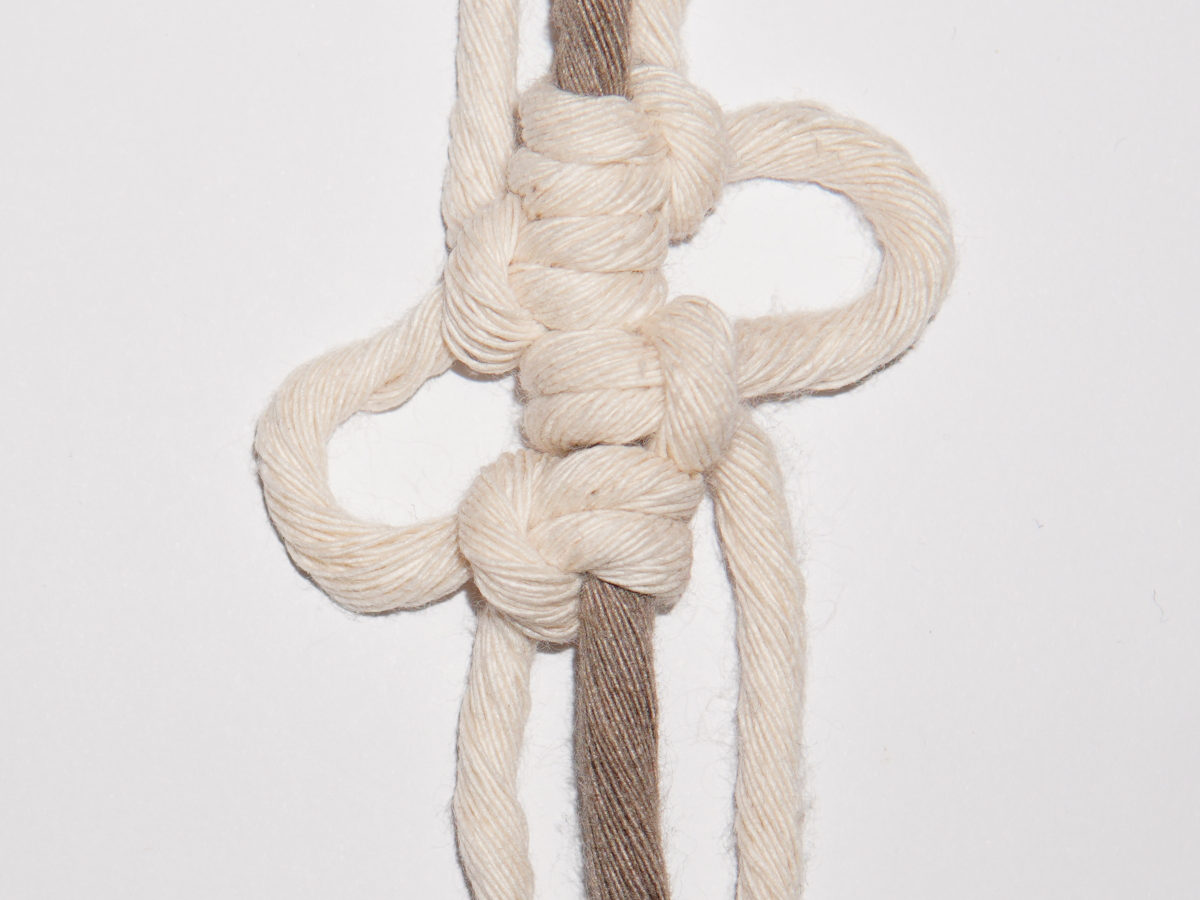
5
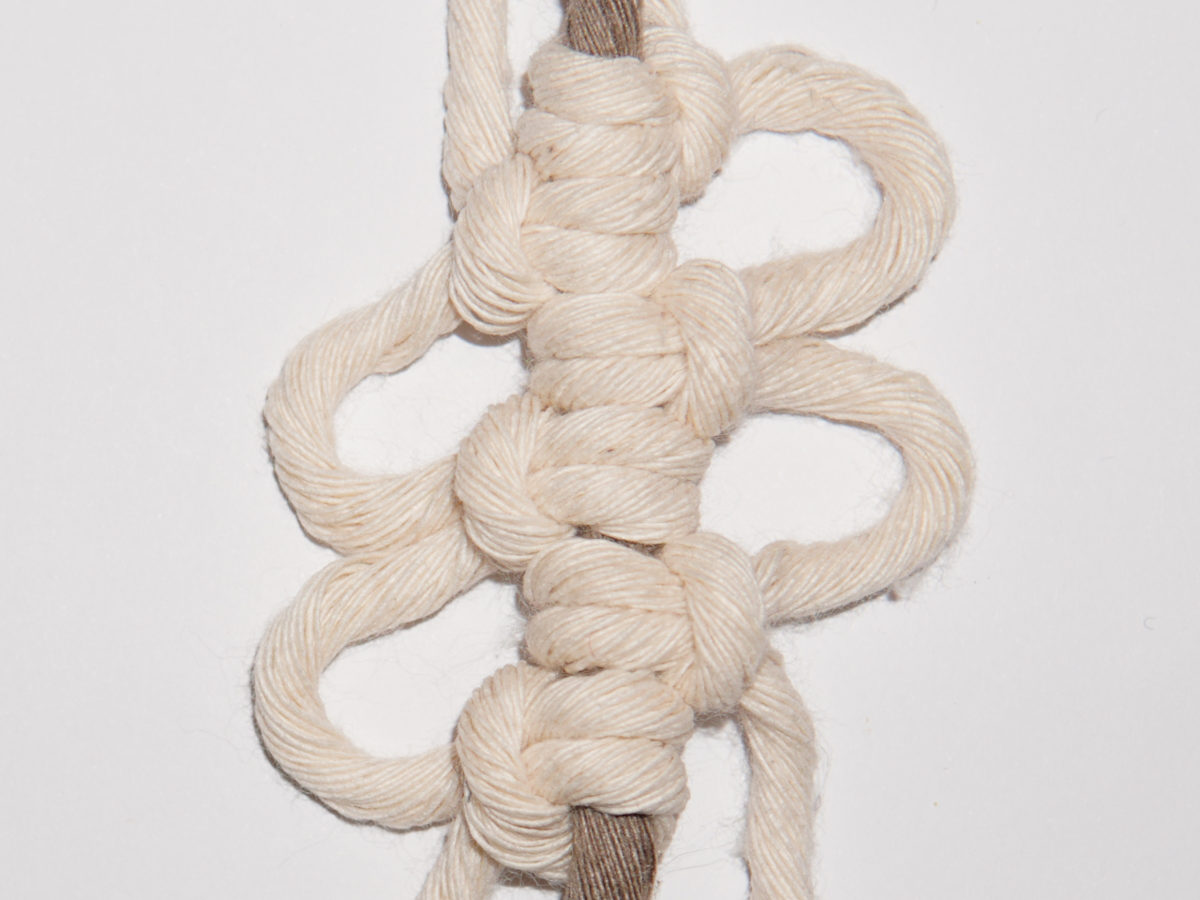
6
That’s it! Now you know the common variations of the Lark’s Head Knot. If you don’t understand a step or have any further questions, feel free to write in the comments.
Have fun knotting!
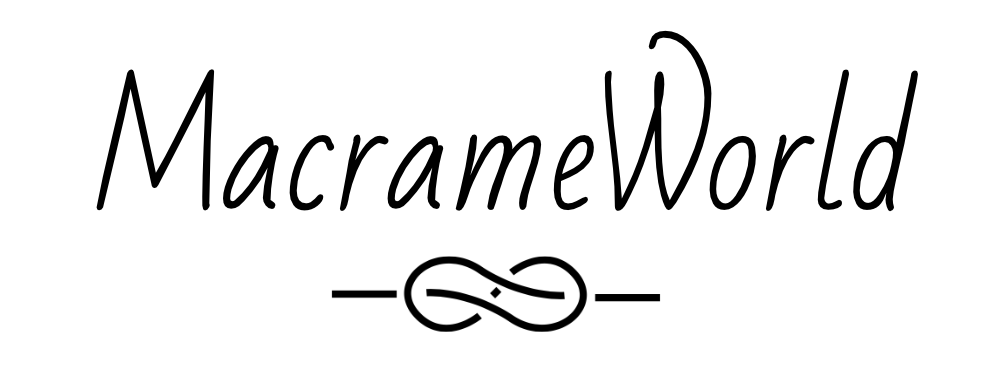
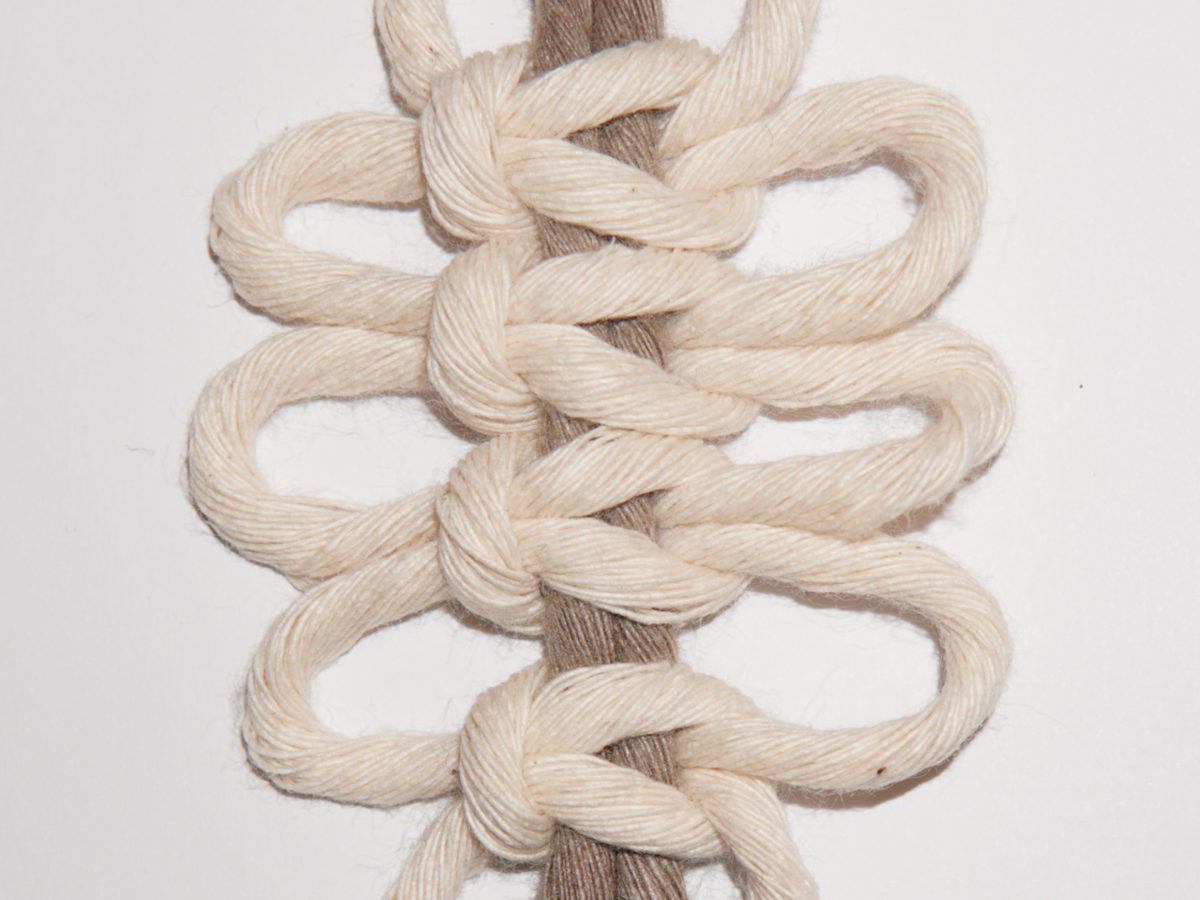
0 Comments